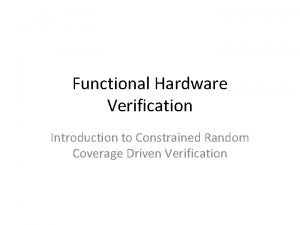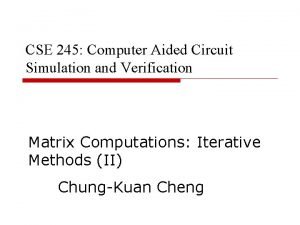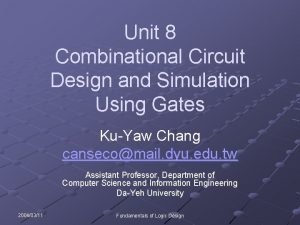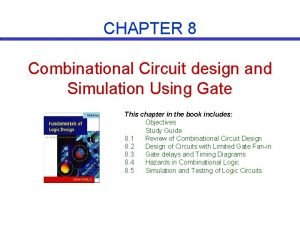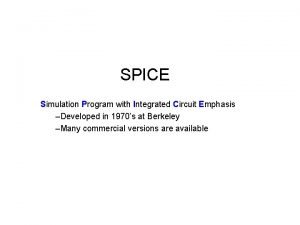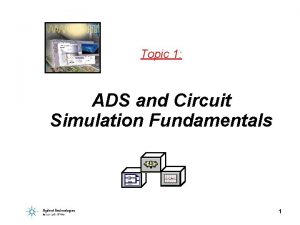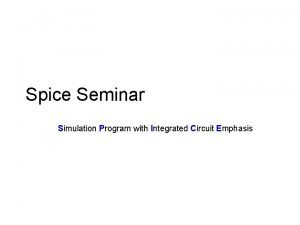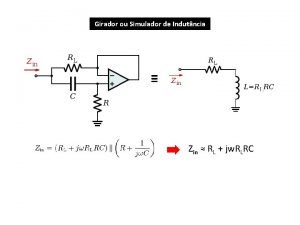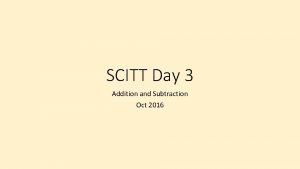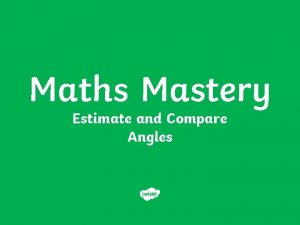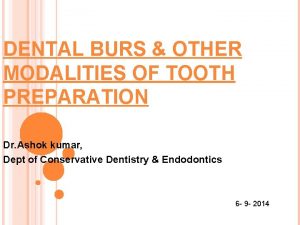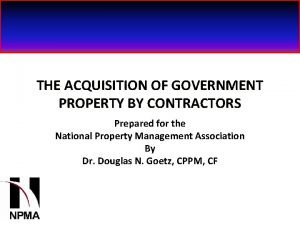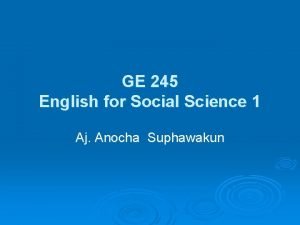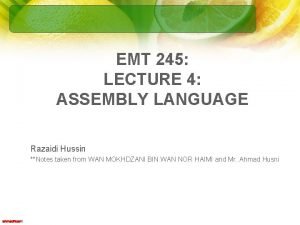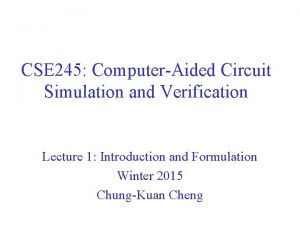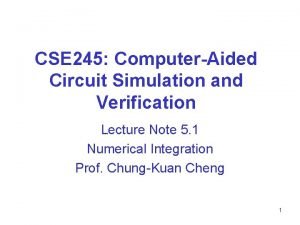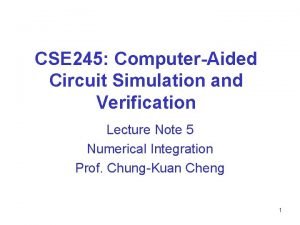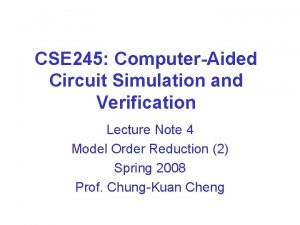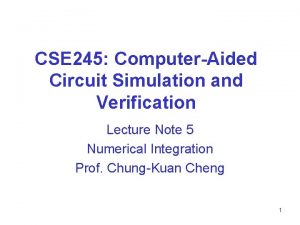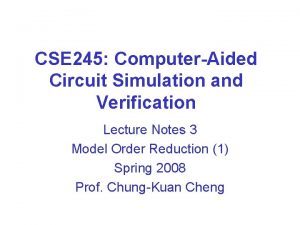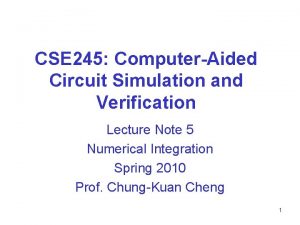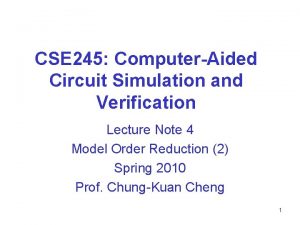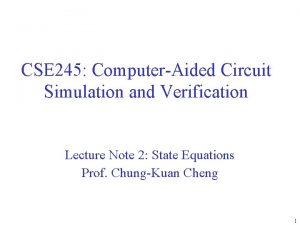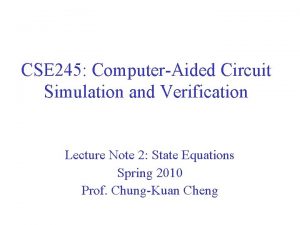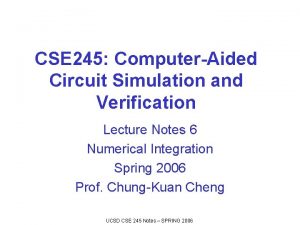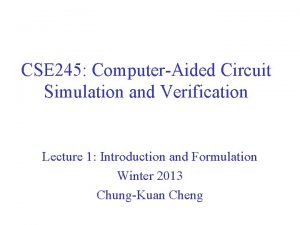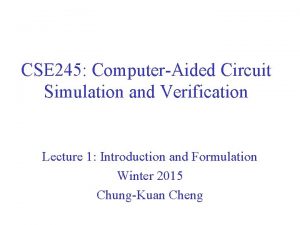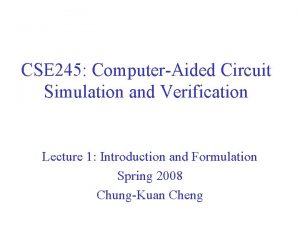CSE 245 ComputerAided Circuit Simulation and Verification Lecture

















- Slides: 17

CSE 245: Computer-Aided Circuit Simulation and Verification Lecture Notes 3 Model Order Reduction (1) Spring 2006 Prof. Chung-Kuan Cheng UCSD CSE 245 Notes – SPRING 2006

Outline • Introduction • Formulation • Linear System – Time Domain Analysis – Frequency Domain Analysis – Moments – Stability and Passivity – Model Order Reduction UCSD CSE 245 Notes – SPRING 2006

Transfer Function State Equation in Frequency Domain ( suppose zero initial condition) Solve X Express Y(s) as a function of U(s) Transfer Function: UCSD CSE 245 Notes – SPRING 2006

Stability • A network is stable if, for all bounded inputs, the output is bounded. • For a stable network, transfer function H(s)=N(s)/D(s) – Should have only negative poles pj, i. e. Re(pj) 0 – If pole falls on the imaginary axis, i. e. Re(pi) = 0, it must be a simple pole. UCSD CSE 245 Notes – SPRING 2006

Passivity • Passivity – Passive system doesn’t generate energy – A one-port network is said to be passive if the total power dissipation is nonnegative for all initial time t 0, for all time t>t 0, and for all possible input waveforms, that is, where E(t 0) is the energy stored at time t 0 • Passivity of a multi-port network – If all elements of the network are passive, the network is passive UCSD CSE 245 Notes – SPRING 2006

Passivity in Complex Space Representation • For steady state response of a one-port • The complex power delivered to this one-port is • For a passive network, the average power delivered to the network should be nonnegative UCSD CSE 245 Notes – SPRING 2006

Linear Multi-Port Passivity • For multi-port, suppose each port is either a voltage source or a current source – For a voltage source port, the input is the voltage and the output is a current – For a current source port, the input is the current and the output is a voltage – Then we will have D=BT in the state equation – Let U(s) be the input vector of all ports, and H(s) be the transfer function, thus the output vector Y(s) = H(s)U(s) • Average power delivered to this multi-port network is • For a passive network, we should have UCSD CSE 245 Notes – SPRING 2006

Linear System Passivity • State Equation (s domain) • We have shown that transfer function is where • We will show that this network is passive, that is UCSD CSE 245 Notes – SPRING 2006

Passivity Proof • To show • Is equivalent to show where • We have • Thus UCSD CSE 245 Notes – SPRING 2006

Passivity and Stability • A passive network is stable. • However, a stable network is not necessarily passive. • The interconnection of passive models is a passive model • However, the interconnection of stable models is not necessarily stable UCSD CSE 245 Notes – SPRING 2006

Model Order Reduction (MOR) • MOR techniques are used to build a reduced order model to approximate the original circuit Huge Network Formulation Small Network MOR UCSD CSE 245 Notes – SPRING 2006 Realization

Model Order Reduction: Overview • Explicit Moment Matching – AWE, Pade Approximation • Implicit Moment Matching – Krylov Subspace Methods • PRIMA, SPRIM • Gaussian Elimination – TICER – Y-Delta Transformation UCSD CSE 245 Notes – SPRING 2006

Moments Review • Transfer function • Compare • Moments UCSD CSE 245 Notes – SPRING 2006

Moments Matching: Pade Approximation Choose the 2 q rational function coefficients So that the reduced rational function matches the first 2 q moments of the original transfer function H(s). UCSD CSE 245 Notes – SPRING 2006

Moments Matching: Pade Approximation – Step 1: calculate the first 2 q moments of H(s) – Step 2: calculate the 2 q coeff. of the Pade’ approximation, matching the first 2 q moments of H(s) UCSD CSE 245 Notes – SPRING 2006

Pade Approximation: Coefficients For a 1 a 2, …, aq solve the following linear system: For b 0 b 1, …, bq-1 calculate: UCSD CSE 245 Notes – SPRING 2006

Pade Approximation: Drawbacks • Numerically unstable – Higher order moments – Matrix powers converge to the eigenvector corresponding to the largest eigenvalue. – Columns become linear dependent for large q. The problem is numerically very ill-conditioned. • Passivity is not always preserved. – Pade may generate positive poles UCSD CSE 245 Notes – SPRING 2006
 Simulation phases of systemverilog verification
Simulation phases of systemverilog verification Cse simulation oy
Cse simulation oy 01:640:244 lecture notes - lecture 15: plat, idah, farad
01:640:244 lecture notes - lecture 15: plat, idah, farad Combinational circuit design and simulation using gates
Combinational circuit design and simulation using gates Simulation and testing of logic circuits
Simulation and testing of logic circuits Spice (simulation program with integrated circuit emphasis)
Spice (simulation program with integrated circuit emphasis) Ads circuit simulation
Ads circuit simulation Bridged t network transfer function
Bridged t network transfer function Microwave circuit simulation software
Microwave circuit simulation software Munpf
Munpf Simulador
Simulador Use a number line to solve 245-137
Use a number line to solve 245-137 245 angle
245 angle 245 prime factors
245 prime factors Types of burs used in operative dentistry
Types of burs used in operative dentistry Milstrip
Milstrip Aj 245
Aj 245 Emt 245
Emt 245
